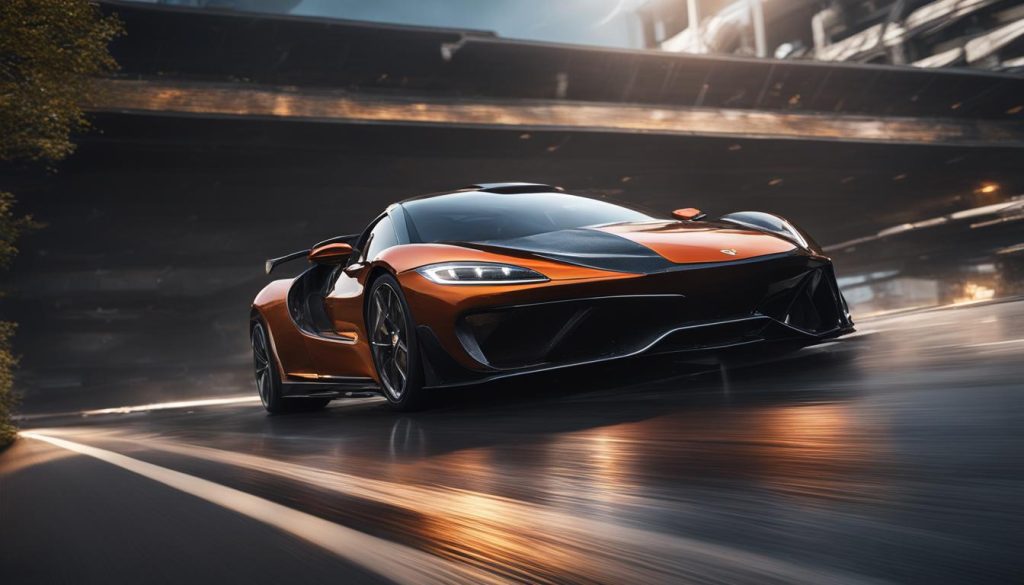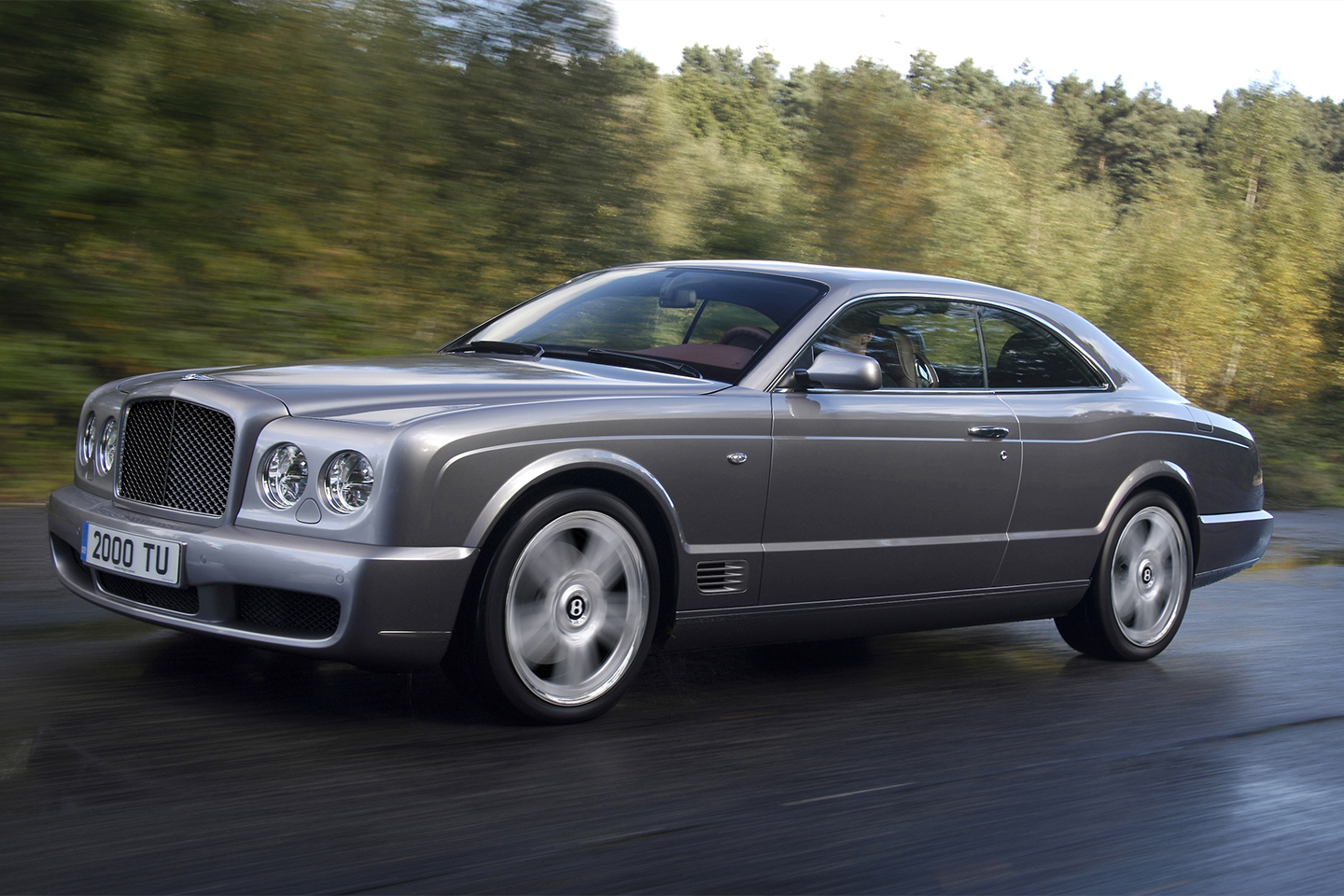
Key considerations
- Available for £110,000
- 6.8-litre V8 petrol twin-turbo, rear-wheel drive
- Bulldozer torque, revs not necessary
- A remote-operated screen and Nokia business phone were standard
- Superb build and reliability
- VW ownership of Bentley didn’t really keep running costs low
Bentley has always had a good handle on what makes a luxurious and powerful four-seater coupe, having been building them pretty much forever. Leaving aside inter-war exotica like Woolf Barnato’s Gurney Nutting Speed Six ‘Blue Train’, the most relatable production Bentley coupe was probably the Mk 1 Continental of the 1950s. If Phileas Fogg of speedy global travel fame had been around at that time and had opted to go by car rather than by his often impractical hot air balloon, you’d like to think he would have picked a Mk 1 Conti.
Shunt Phil Fogg forward in time by another half-century or so and he would surely have had his eye on the 2008-11 Bentley Brooklands as his preferred mode of transport. Detractors might say it was just an Arnage coupe or, to put it another way, a hardtop Azure, but there was rather more to it than that.
The Brooklands was seen as the successor to the 1991-2003 Bentley Continental R coupe which at the time was the fastest, most powerful and, at a minimum price of £181,000, the most expensive Bentley ever. At £230,000 before options, the new Brooklands wasn’t exactly bargain basement but the development budget for it was. Its original raison d’etre was to keep Bentley’s designers occupied after the Continental, Arnage and Azure programmes had been completed. 60 per cent of the Brooklands came from the Azure. Not much more than the roof, rear skin, seats and underbody, and suspension tuning were truly new.

What these two big beasts, the Continental R and the Brooklands, had in common was a beast of an engine, Rolls-Royce’s legendary all-aluminium L series 6.7-litre V8. This was motoring’s equivalent of the Spitfire’s Merlin engine. It wasn’t much younger than the legendary World War II fighter plane either, having first powered Rolls-Royce production cars back in 1959. Even in the 2008 Brooklands the L didn’t have the four-valve overhead cam heads that had been standard on high-performance cars since the 1980s. Instead, its two valves per cylinder were activated by pulsating pushrods and rocker arms choreographed by a single central gear-driven camshaft.
In the first Brooklands, the four-door saloon of 1993, the naturally aspirated 6.75 litre L V8 was good for a relaxed 221hp and 332lb ft. With a single Garrett turbocharger fitted to it in the ’91 Continental R the numbers went up to 315hp and 485lb ft. The 1996-on Continental T had it up to 426hp and 650lb ft from the 1999 model year but nobody in their right mind could have predicted that the same unit would still have been oozing around the Home Counties in 2008 under the county-sized bonnet of the new Brooklands coupe. There it was, though, with twin MHI turbochargers boosting peak power to 530hp at 4,000rpm and torque to 774lb ft at 3,250rpm. You read that right: 774lb ft. At the time it had more grunt than any other Crewe-built V8, or indeed any other petrol-powered production V8. ZF’s 6-speed gearbox had to be specially reinforced to handle it. Bentley had form for this sort of thing. On the earlier Turbo R, which in early development was generating over 500lb ft, General Motors had had to insist on Bentley turning down the boost before they would sign up to transmission warranty agreements.
Somehow the L V8 continued until 2020, when the last of the sixty-year run of 36,000 engines was smoothly slipped into a Mulsanne 6.75 Edition by Mulliner. By that time the pushrod V8 was serving up a road-wrinkling 811lb ft. Power remained the same at 530hp, an amount that might not seem spectacular today, but the hulking torque still raises a nervous giggle in 2023. The Brooklands’ fuel consumption and CO2 emissions figures – 14.1mpg combined and 465g/km – were, and still are, intimidating. Imagine how much juice it would be swigging at a steady 184mph, the car’s eminently doable top speed. Naughty, but nice.
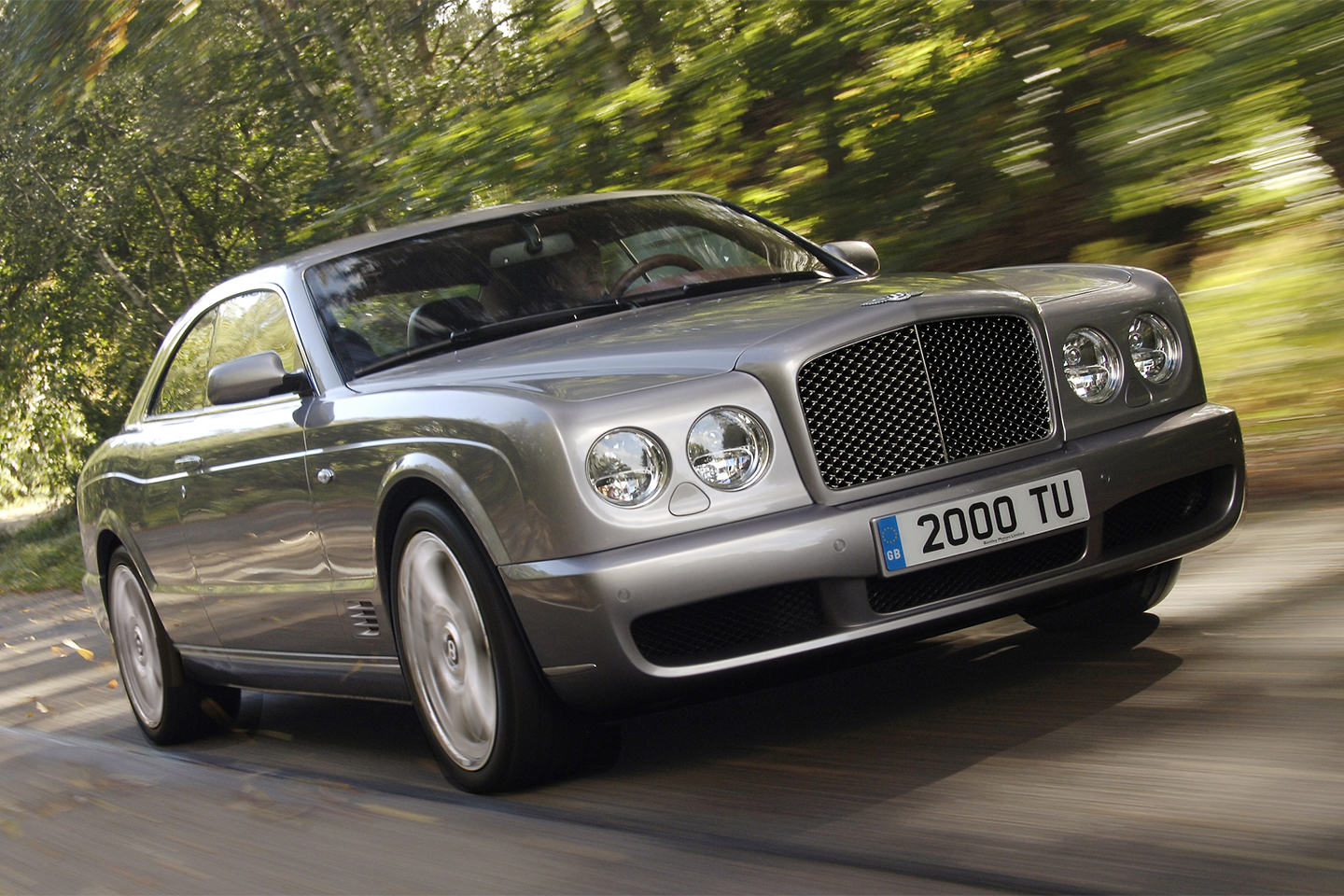
That 6.75 Mulliner Mulsanne cost in the region of £350,000 new. Just thirty of them were built and at the time of writing, we couldn’t find any for sale in the UK. As noted earlier the gen-two Brooklands was expensive too but with a limit of 550 cars on the three-year Crewe run it was nowhere near as exclusive as the MM or, in 2023, as elusive, even though that 550 limit was never reached. More on that in the Verdict.
Point being, a genuine used market in the Brooklands does exist. Don’t expect to find one for the same sort of money as a ’93 Brooklands though. Those old four-doors start at under £20,000. A Brooklands coupe will cost you at least £110,000.
It’s a lot of money but, well, just look at it. Is there any finer combination of power and elegance? This is the sort of automotive statement that will get hotel doormen scuttling to move lesser cars off the forecourt. You’d like to hope so, actually, because you might not fancy trying to squeeze one into a multi-storey. Outside of the car park and on the open road you may come to the conclusion that this is one of the best Bentleys of any age, past or present.
SPECIFICATION | BENTLEY BROOKLANDS (2008-11)
Engine: 6,761cc V8 16v twin-turbocharged petrol
Transmission: 6-speed auto, rear-wheel drive
Power (hp): 530@4,000rpm
Torque (lb ft): 774@3,250rpm
0-62mph (secs): 5.3
Top speed (mph): 184
Weight (kg): 2,655
MPG (official combined): 14.5
CO2 (g/km): 465
Wheels (in): 20
Tyres: 255/40
On sale: 2008 – 2011
Price new: £230,000
Price now: from £110,000
Note for reference: car weight and power data are hard to pin down with absolute certainty. For consistency, we use the same source for all our guides. We hope the data we use is right more often than it’s wrong. Our advice is to treat it as relative rather than definitive.
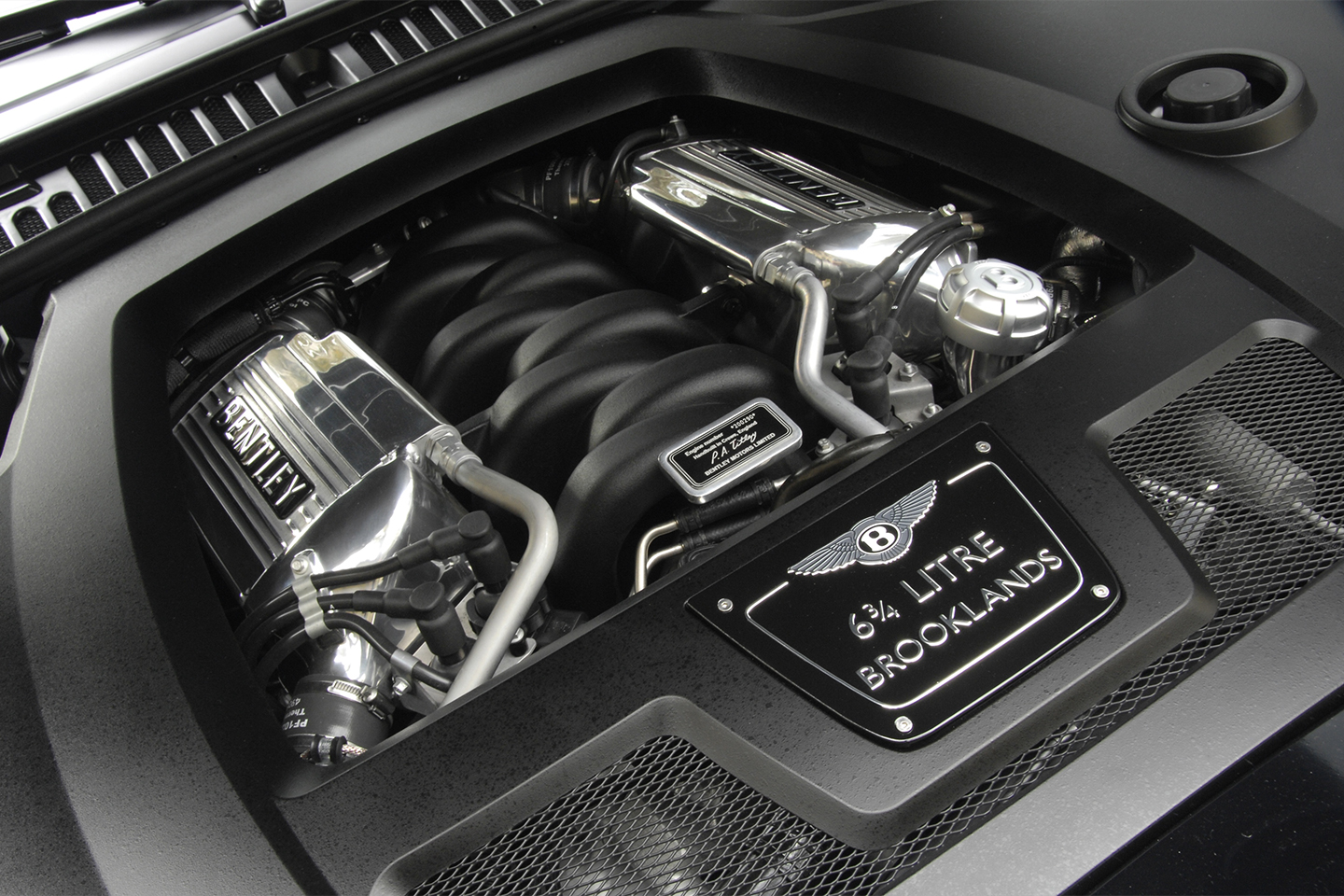
ENGINE & GEARBOX
When Volkswagen bought Bentley one of the first things VW boss Ferdinand Piech did was have the BMW engine taken out of the Arnage and the 6.75 ‘L’ V8 put in. By any sensible engineering standards, it was a comically retrograde step, but Piech understood the needs of the market. The V8’s maximum power came in at 4,000rpm, a mid-range sort of mark in most cars, but Piech knew that Bentley owners would never get anywhere near these engine speeds. Nor did they need to in a Brooklands. The red line was at 4,600rpm and the tacho didn’t go beyond 5,000rpm but you were whooshing effortlessly past everything else on the road long before the needle had got anywhere near the 3,000rpm mark. The very name of the main powertrain man at Bentley at the time, Brian Gush, gave you a clue about the character of the L. For this engine, revs were irrelevant.
The additional beauty of an engine as old as the L series – a deep Y-shaped block design like the Merlin V12 with wet liners and a single gear-driven camshaft in the centre for refinement – is that there’s been plenty of time to understand its workings and foibles. It was a tough old boot right from the start. Back in the 1950s, the then-6.2 litre V8 was benchmarked against American V8s. In testing, the Detroit iron was routinely run at maximum throttle for four days non-stop. The L was just warming up at that point. It ran on at WOT for over three weeks.
Twin-turbo L-series engines did have issues with head gaskets and camshaft/tappet wear, but modified head studs and bolts and different head gaskets put that issue to bed in 2007, a year before the Brooklands arrived. By this time Bentley reckoned that, with no spark plug and hiked compression, the engine was strong enough to run on diesel without damage. Another story was put about that the new engine could idle on the exhaust emissions of the old one. That might be an urban myth, but then again it might not. For 2010 the weight of the crankshaft was reduced by 6kg and the pistons and conrods by a total of nearly 2kg, which was a lot for those components.
As with the power output, 5.3sec for the 0-62mph and 0-100mph in 11.7sec might not sound that impressive nowadays but it certainly was when it was being achieved in such an enormous piece of equipment and with that ZF gearbox that wasn’t mega-responsive. Context was everything. There were no gearshift paddles, which on first acquaintance seemed quite appropriate on a car this big, but the competence of the chassis suggested that they might have been a fun idea, especially as the action of the main selector lever in manual mode – forward to change up, backward for down – was counter-intuitive.
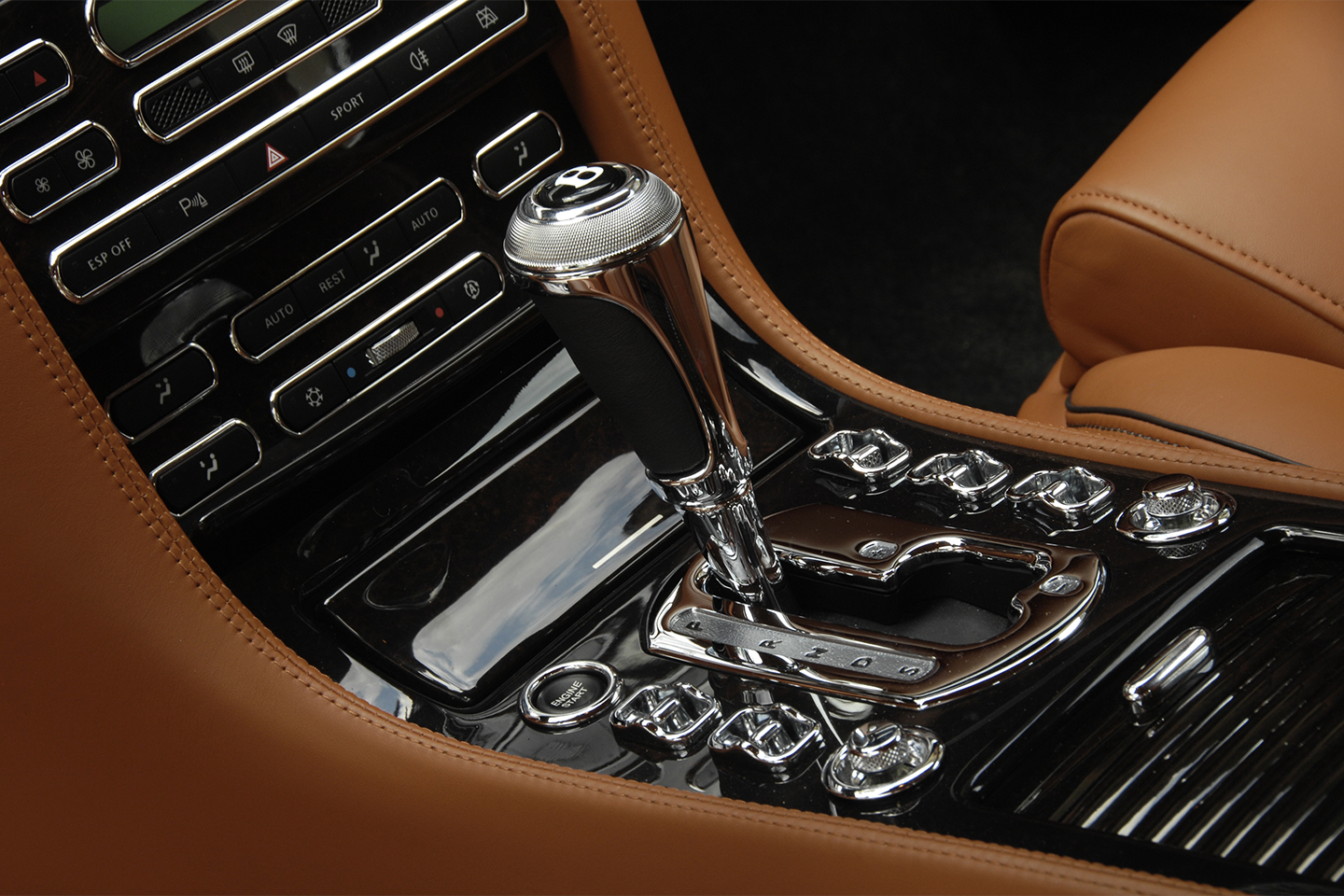
If you weren’t mentally prepared to handle single-figure mpg numbers, you wouldn’t want a Brooklands. Same with servicing. To accumulate a posh service history with certificates to say that your car had been prepared to exacting standards by Bentley Certified Technicians you might want to stick with big-name operators like P&A Wood or Jack Barclay, but you’d have to be prepared for a lack of online transparency on costs. It’s a pity that servicing costs (not just for Bentley) so often seem to be some kind of state secret, a case of ‘enquire’ or ‘POA’. What do they have to hide? Well, you can probably guess. A Brooklands auctioned in March 2021 for £82,500 came with paperwork for a P&A Wood service that had been carried out in February 2019 at 35,000 miles. The list of new items wasn’t that long – rear brakes, batteries, steering rack, tyre pressure monitoring sensors and, oddly, the horn. The bill came to £8,700.
Some outfits like Rybrook do preferential rates (20 per cent off parts and lower labour rates) for older Bentleys, but by ‘old’ they mean 8-10 years, a narrow window that excludes the Brooklands, You’d like to think they’d be happy to talk to you at least. Rybrook’s fixed-price service plans (£2.5k to include one service per year for the first three years) only apply to cars that are up to 3 years old. Even the traditionally cheaper independents are coy about their prices. Prasads Automotive in Sydenham do publish some: from £703 for a ‘small’ service, from £915 for a ‘medium’ and from £1,291 for a ‘large’, but they don’t say what any of those services entail and the word ‘from’ makes it all a bit open-ended. Still, at least they have had a go.
Flying B in Nantwich (Cheshire) has a good reputation as an independent, with only ex-factory Techs and Specialist Engineers working there. They offer fixed price servicing, the costs of which they are happy to put on their website but again it would be a case of talking to them about a Brooklands as the newest one of those will be more than 10 years old and this model is not specifically mentioned on their site (although Arnages are). As a guide though their annual/10k services start at £530 for year one and for each year after that they go £800, £530, £1,150, £530, £1,195, £530, £1,150, £530 and £1,650 in year 10. Besides servicing they do wood and soft trim repairs as well as performance upgrades.
Flying Spares in Leicestershire can usually help out with aftermarket parts if originals are hard or impossible to obtain from Bentley.
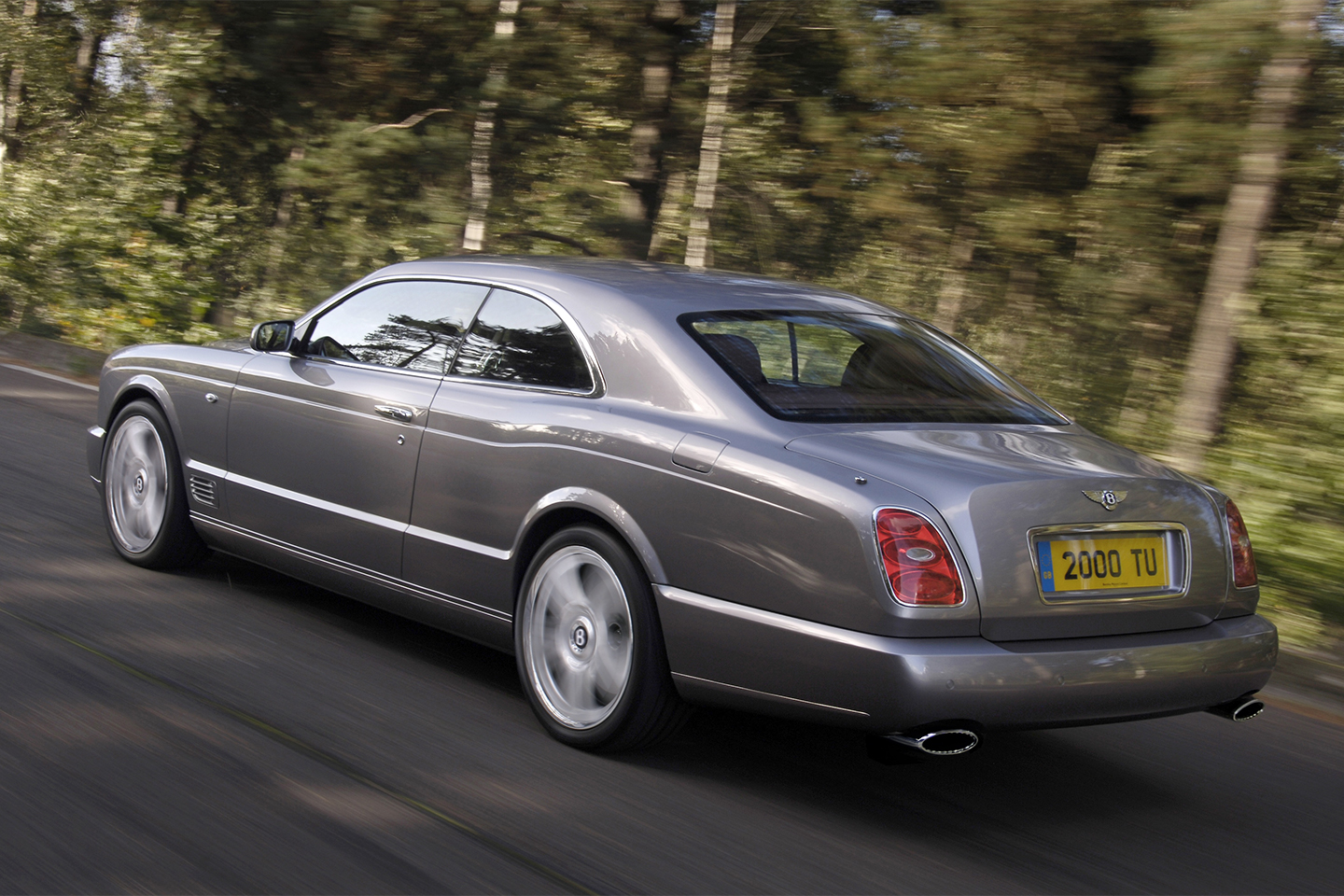
CHASSIS
As noted earlier, the Brooklands was based on the droptop Azure platform. As weight wasn’t considered to be an issue (!) Bentley left all the Azure’s strengthening girders where they were for the Brooklands. This, plus the steel roof, invested the Brooklands with mega body control (for the weight), making it possible for the driver to tip it remarkably sharply into corners (for the weight) and even ‘earhole’ the car in safety. That was not something you’d particularly want to try in an Azure. Brooklands steering was light but not too light, and impressively precise. Sport mode didn’t do a lot for the car’s handling, but it did help the gearbox a bit.
Carbon ceramic brake discs were a £14,000 option. The 420mm ones on the front wheels were the largest ever fitted to a production car and were claimed to give the Brooklands more stopping power than any other passenger vehicle on sale at the time. Most stopping power wasn’t the same as shortest stopping distance, of course, not with over two and a half tonnes to rein in. That might be something to consider if a Brooklands you were interested in buying was perfect in every way apart from having standard steel brakes and you thought that your driving style might involve frequent hard stops from high speed. With either setup you had more than half a chance of avoiding a Bavarian cattle truck as it pulled dozily out of the inside lane at 50mph while you were humming along at 180mph with Sibelius whispering in your ear, ideally through the £4k Naim stereo option, but with the carbon discs you could avoid two Bavarian cattle trucks in quick succession. That wasn’t necessarily the case with the steels.
20in ‘Disc’ 16-hole wheels were standard Brooklands fitment, but many cars were ordered from new with the optional five-spoke 20in alloys that were part of the Sports Combination Level 1 package. This also included dark-tint stainless steel matrices in the bumper apertures. To that spec Level 2 added diamond-quilted indented hide seat facings and door/three-quarter panels, indented hide for the steering wheel, headlining and quarter head cushions and embroidered marque emblems on all four headrests.
Cars as heavy as these will inevitably go through suspension components at a fair rate but there are no model-specific issues that we’re aware of outside of normal wear and tear. Air suspension generically can have problems. If one end of the car is lower than the other, usually the front, you’ll need to address this before the compressor dies expensively. It’s not a bad idea to adjust the air suspension system every now and then as you’re going along. Exercising it in this way will help to prevent premature seizing-up of sensors, valves and the like.
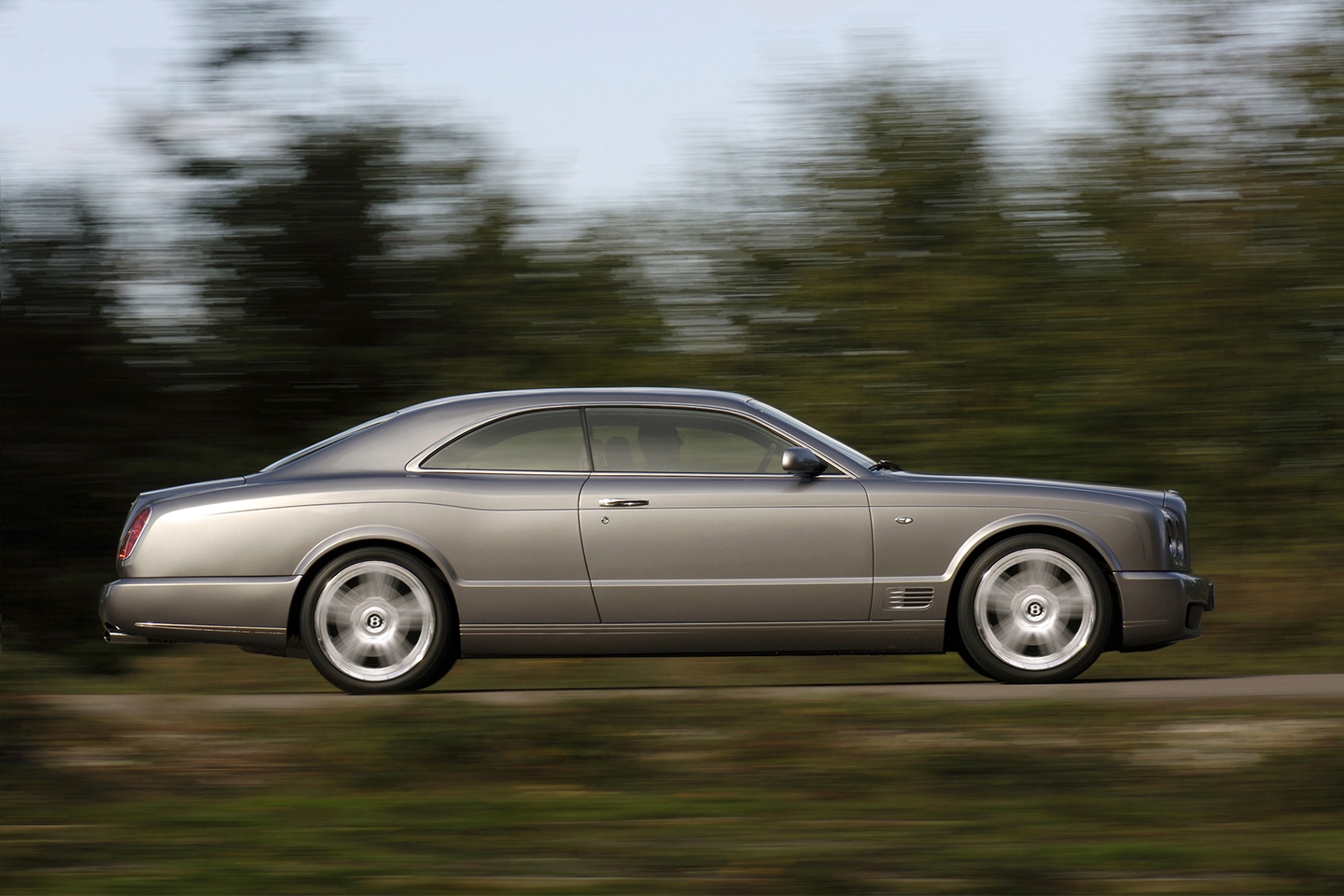
BODYWORK
There was no getting away from the fact that the Brooklands was a huge vehicle. It was getting on for eighteen feet long, with a ten-foot wheelbase and a weight of over 2.6 tonnes, but if you saw a picture of one with no human being in view you’d have no clear idea about how massive it was. That was a tribute not just to Raul Pires and the other members of Dirk van Braeckel’s design team who did such a brilliant job of disguising the heft, but also to the Crewe craftsfolk whose coachbuilding skills allowed the designers to incorporate things they might not otherwise have been able to, like for example the ‘floating’ rear screen whose lower edge sat well above the upper edge of the boot lid. That feature was only made possible because the time-served Crewe crew had the ability to flawlessly hand-weld the rear wings to the C-pillars.
Talking of pillars, the Brooklands was a pillarless coupe, well, B-pillarless anyway, with one button on the centre console to drop all four windows at once. This helped to create a lovely airy feel that was nicely in keeping with the Brooklands’ claim to have the most spacious rear seating area in coupe history. The doors were so big they had two interior handles, the rearmost one being for back seat passengers to use.
The exterior door handles were knurled to glitter in a suitably seductive manner and there were some lovely paint colours available in the literally billions of colour and trim combos, like Grey Violet or Burnt Oak. You could ask for the front grille to be chromed if you were a complete bounder.

INTERIOR
The inside of a Brooklands would have been familiar to Azure owners but with a kind of extra magnificence conferred by the solid roof. The presence of a railed chassis gave the floor a high feel but that fitted in with the general loftiness of the experience. Above you was a leather headlining. There was no sunroof option: you bought an Azure for that. Below you were sumptuous leathers. Around you were fabulous wood veneers and chunky controls in solid polished stainless steel rather than cheaper plated metals. You could play ‘spot the VW/Audi group piece’ but, by and large, it was an authentic Bentley experience. Of the 600 hours it took to assemble each Brooklands, 125 of them were spent hand-stitching the 16 leather hides. If you couldn’t care less about the impact on resale you could have your name engraved on the door kicker plates for a grand or so.
The front seats in a Bentley or Royce were never especially heavily bolstered because nobody expected you to hoon one around a tight bend, but the surprising competence of the Brooklands chassis did have some testers wishing for more side support. 99.9 percent of Brooklands owners weren’t road testers though. The most troubling inner question for owners would be whether there could possibly be a more deliciously comfortable or affirming environment than this, and if so what.
An infotainment screen rose up out of the dash top on pressing a button in the overhead panel. It wasn’t a touchscreen, as they weren’t really around then. It wasn’t actually an infotainment screen either, as it only controlled the sat nav and the rear camera feed if the first owner had paid extra for that. You operated the screen via a remote that sat in one of two leather pouches in the footwell.
Rear passengers were not only no worse off than those in the front, they were arguably better off because they could see more of the exquisiteness laid out in front of them from their electrically adjustable heated seats. Even six-foot plussers were not compromised on head or legroom in the back. The boot was generously sized and contained not one but two Bentley umbrellas. It was a genuine grand tourer for four. You could get 400 miles and more out of the tank but at April ’23 prices it would cost you £150 to refuel. A Bentley-branded CTEK trickle charger was supplied FOC. There was a Bentley-branded Nokia car phone too, and a mechanical handbrake, but there were no cupholders.
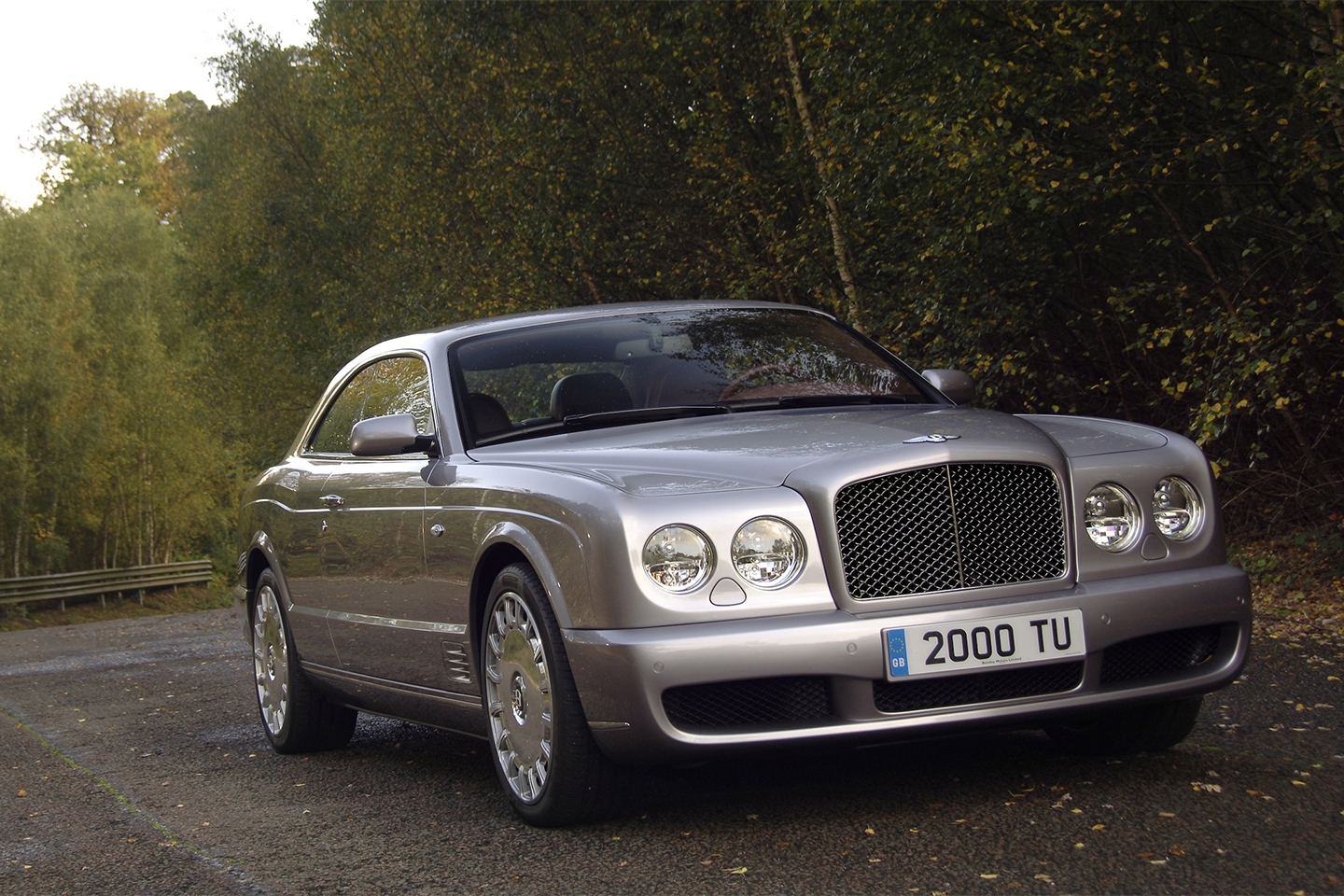
PH VERDICT
The Brooklands is a rare and special car. It’s also a surprising one, belying its burliness by driving much more neatly than you might expect. It was no Euro thoroughbred but it rarely lost its cool. It had the underlying character of an Arnage but with an extra sharpness that didn’t impact negatively on the ride, which was velvety, or on the feel at the steering wheel, which was informative.
Bentley has admitted that it was mainly a back-office shoestring-budget project designed to keep their staff busy between ‘proper’ projects. Almost by accident, it turned into what many seasoned observers consider to be the best Volkswagen-era Bentley ever, and perhaps the best big coupe ever. Two of the press launch cars were immediately appropriated by VW group head Martin Winterkorn and Bentley Motors head Franz-Josef Päfgen, which tells you something.
It was bad luck that the Brooklands was launched in a time of major global economic turmoil, but cars like this are largely untroubled by global events. Anyone wealthy enough to buy such a creation new is usually going to be wealthy enough not to have to sell it. The economic uncertainty did prevent Bentley from selling the whole allocation of 550 cars, however. It’s thought that 426 were sold, with six more prototype cars on top of that. 97 examples were supplied to the UK market, with eight more cars supplied to other right-hand drive markets. The rarest ones are the late ’10 plate cars, of which just six were registered.
On top of this rarity, there’s the sentiment. For many, the ‘L’ V8 was a perfect representation of the good old days. The new school, represented by coupes like the Rolls-Royce Wraith, not so much. Its engine was bigger but despite its extra capacity, four extra cylinders and twin turbos, it had 160lb ft less torque than the Brooklands. The V8 in Brooklands spec really was the nuts.

Three years ago, when the old V8 was about to be decommissioned, you could pick a Brooklands up for under £100,000, but those days seem to be over as the smart ones have begun to realise just how special this car is. The most affordable example on PH Classifieds at the time of writing was this metallic anthracite 33,000 miler from 2008, the first year of manufacture, at a fiver under £110k. Looking around elsewhere shows that £110k does seem to be the entry price point now. The front of this ‘cheap’ one is honourably scarred from brisk sorties, but they and the lived-in driver’s seat make it a car to enjoy rather than embalm.
If you’d like to know more about the Brooklands before purchase there is a Bentley Driver’s Club, but despite the well-meant efforts of PHers WightGT and BDC Chairman Ron Warmington to broaden its appeal, you still can’t get even get limited access to the website without joining, and joining is expensive. Or it was in 2018 anyway: £160 a year plus a £110 joining fee, with some anti-VW era snobbery from the older members thrown in for free, although they do say that’s reduced a bit lately. We were going to say that it would be cheaper to buy Tony Dron’s well-titled book The Bentley Brooklands until we saw what sort of money copies of that were going for these days. Luckily you can download a PDF of it for nothing now.
#Bentley #Brooklands #Buying #Guide



